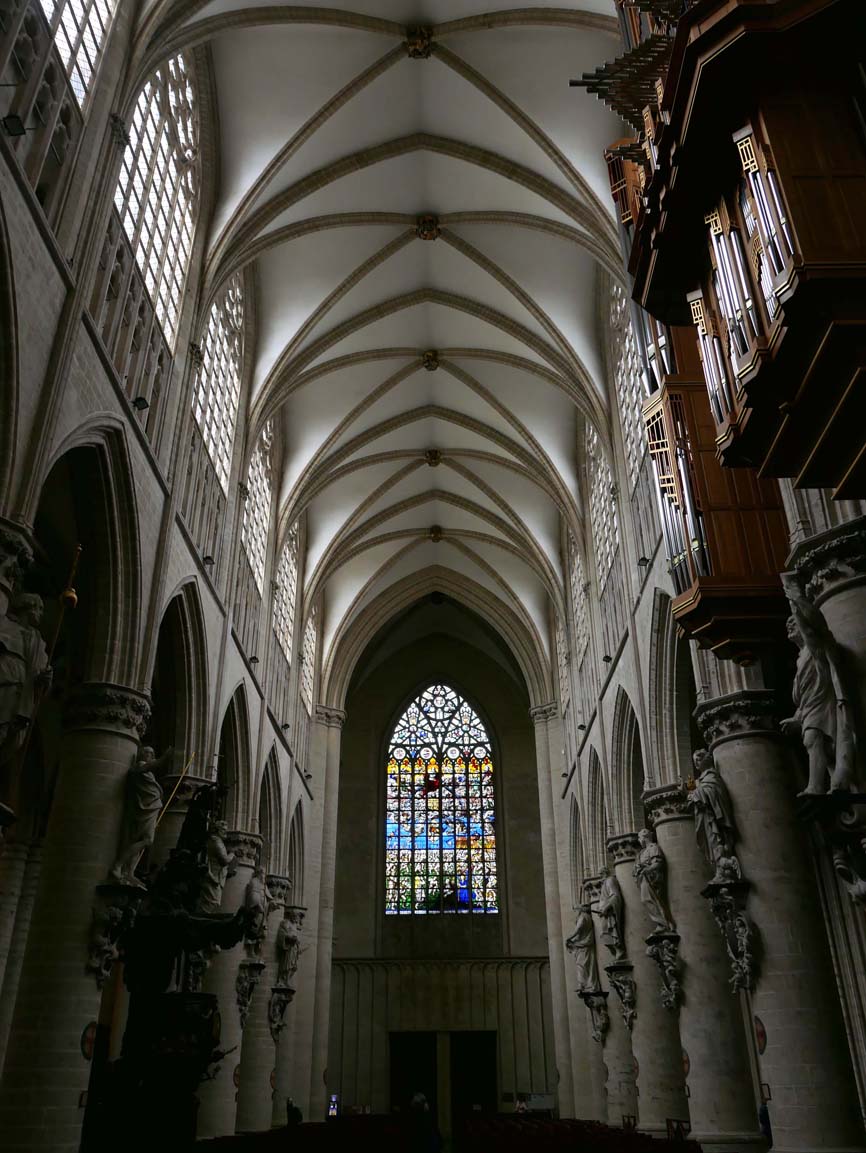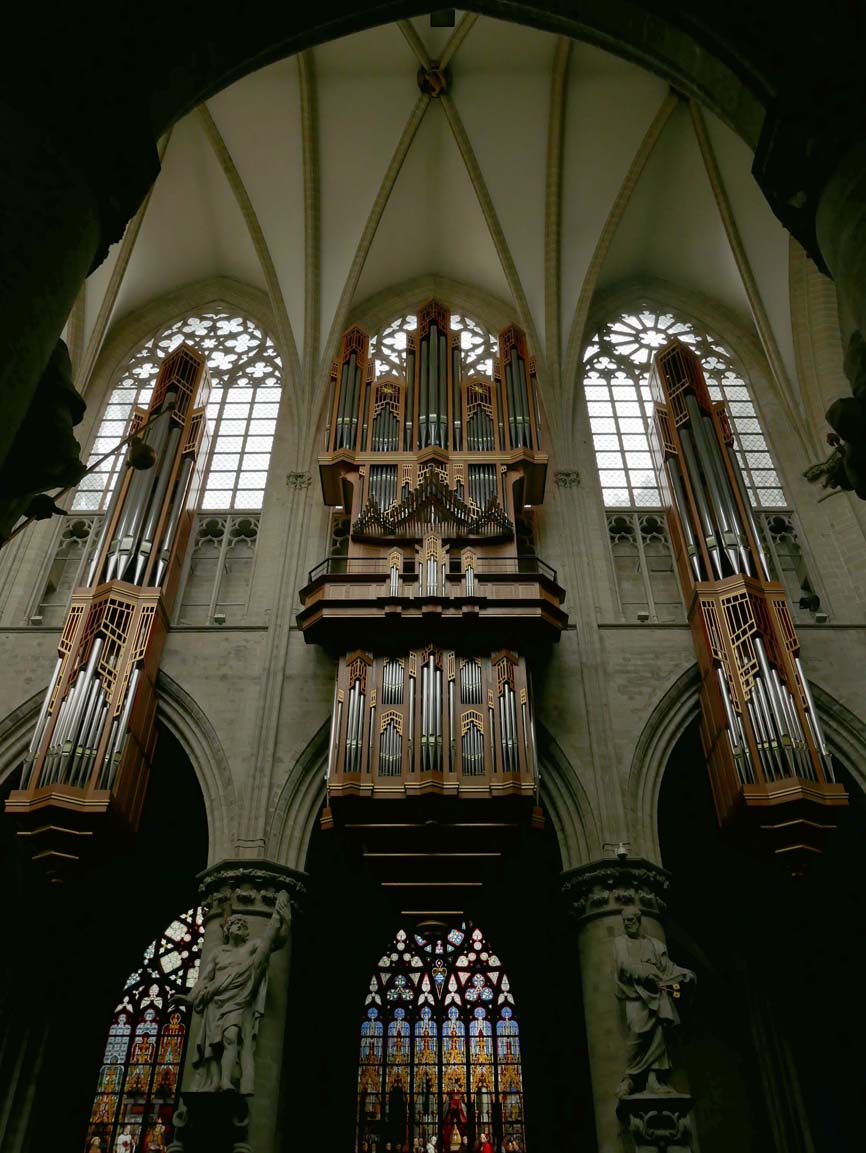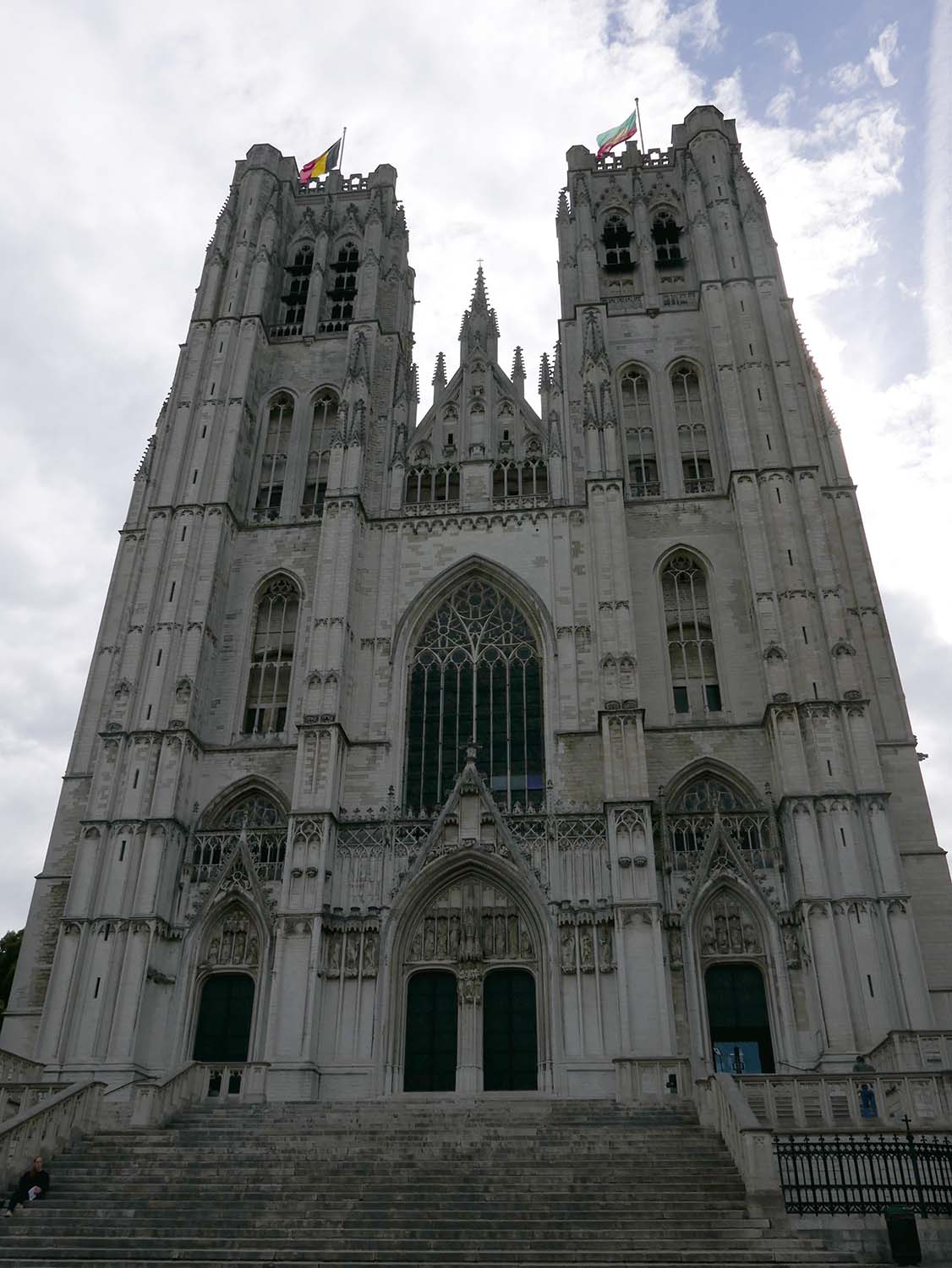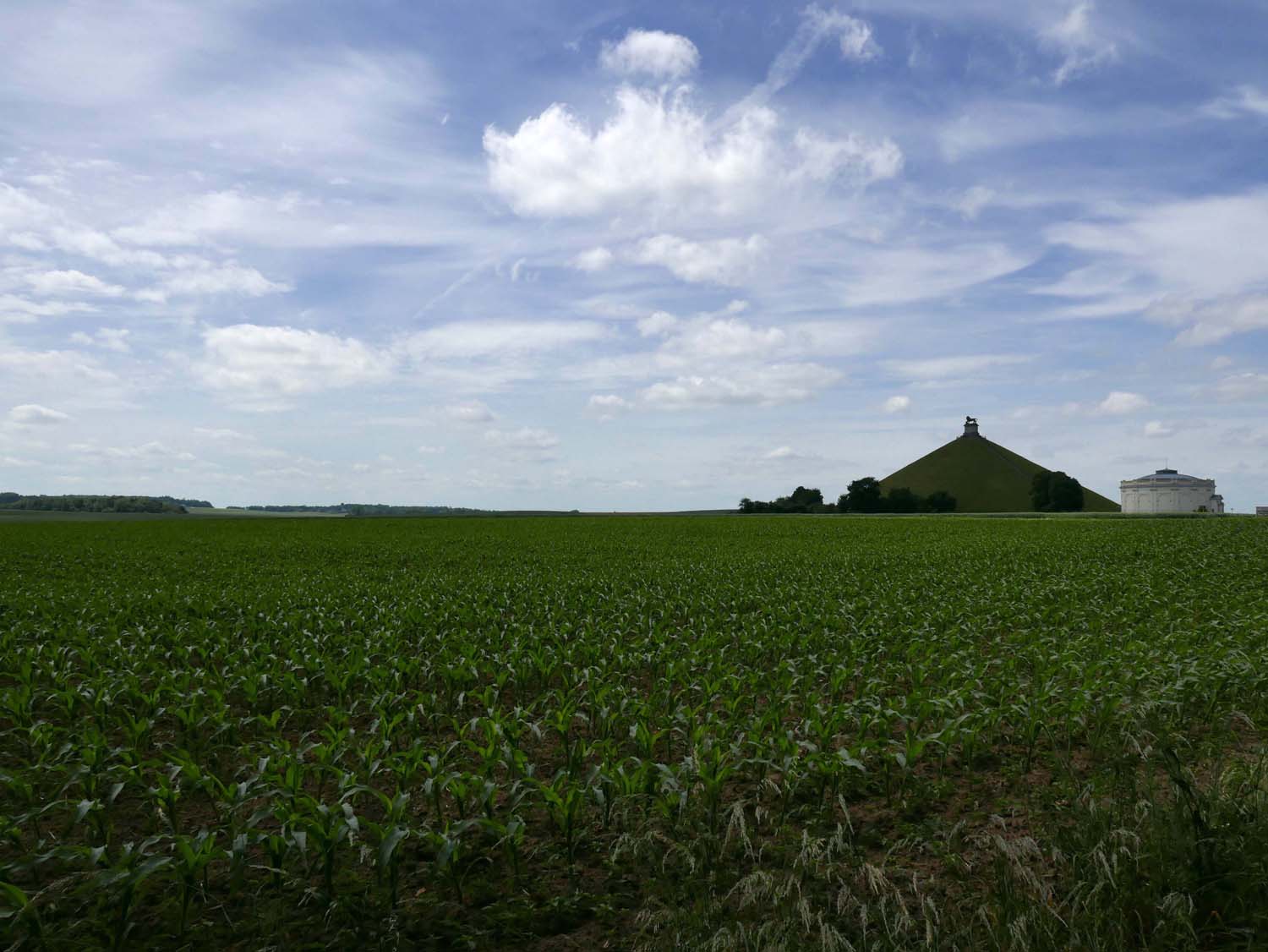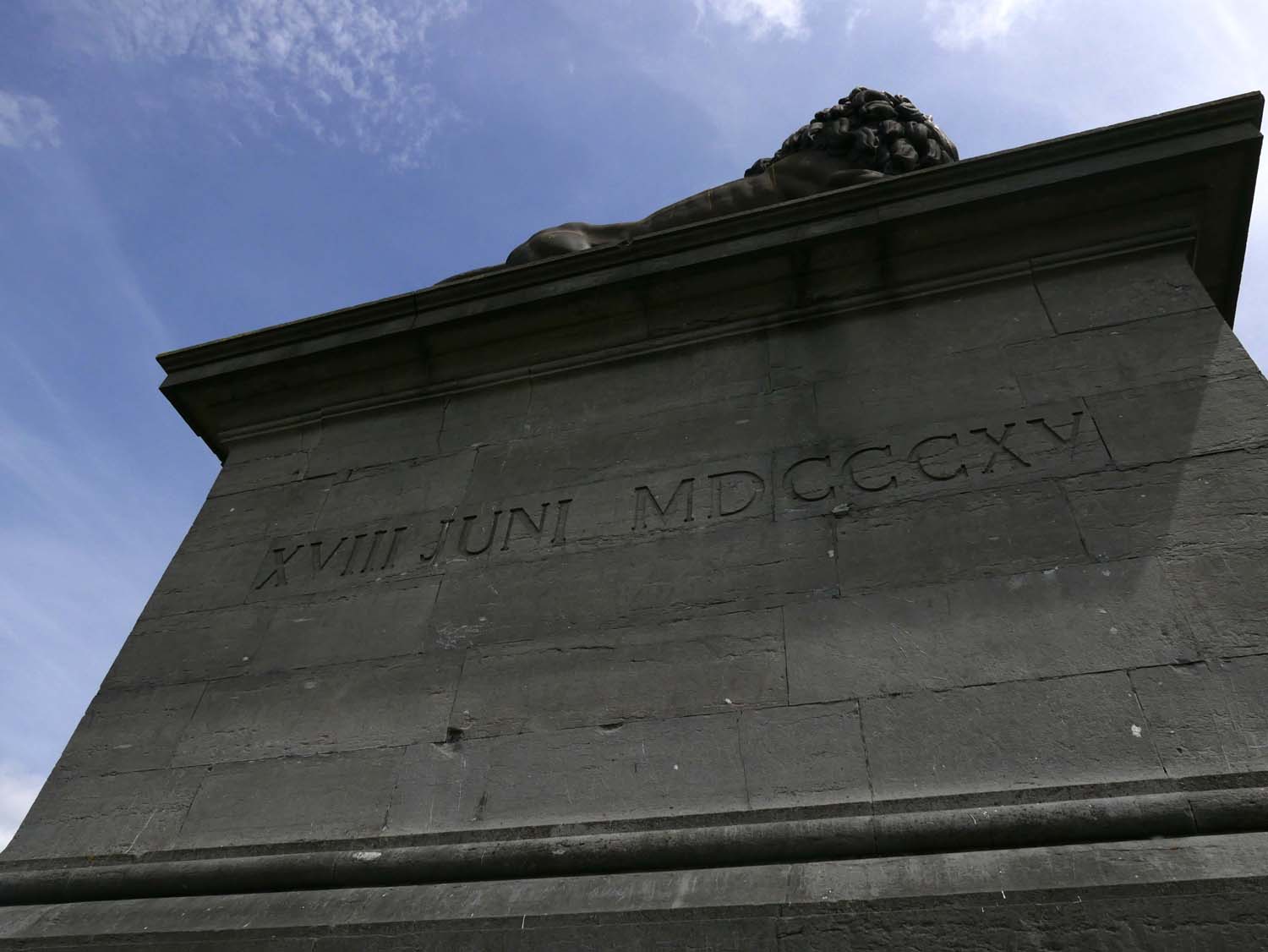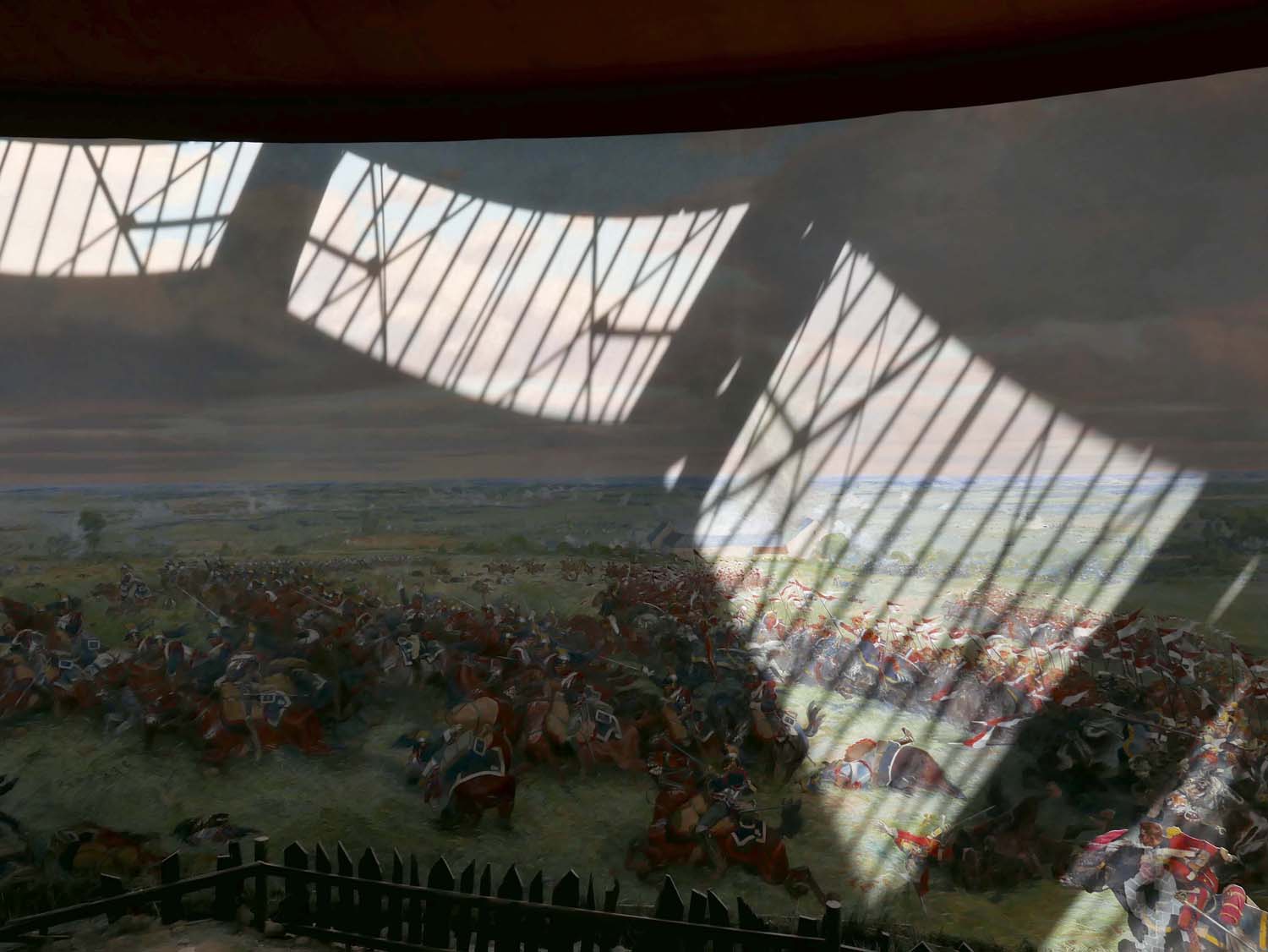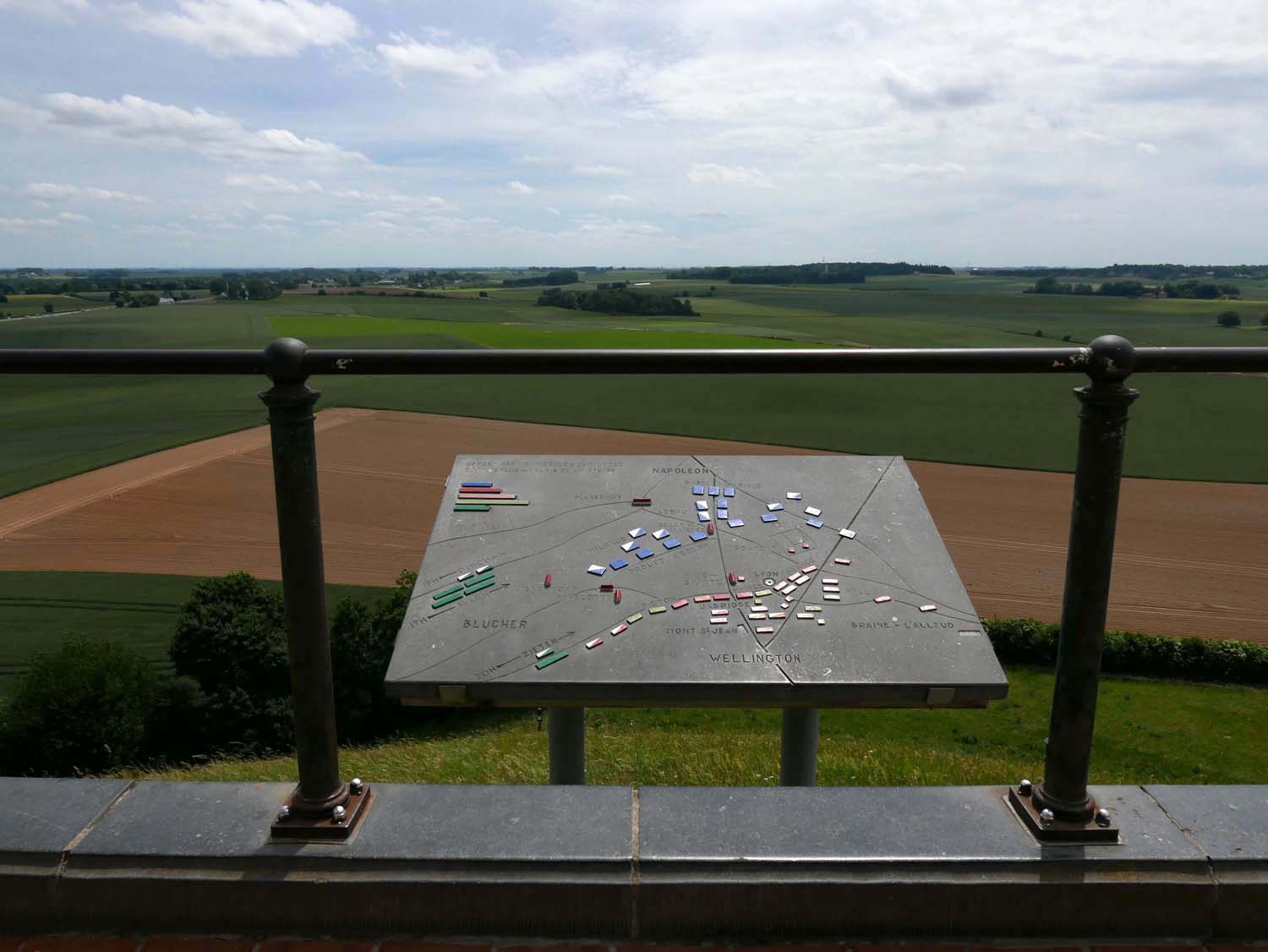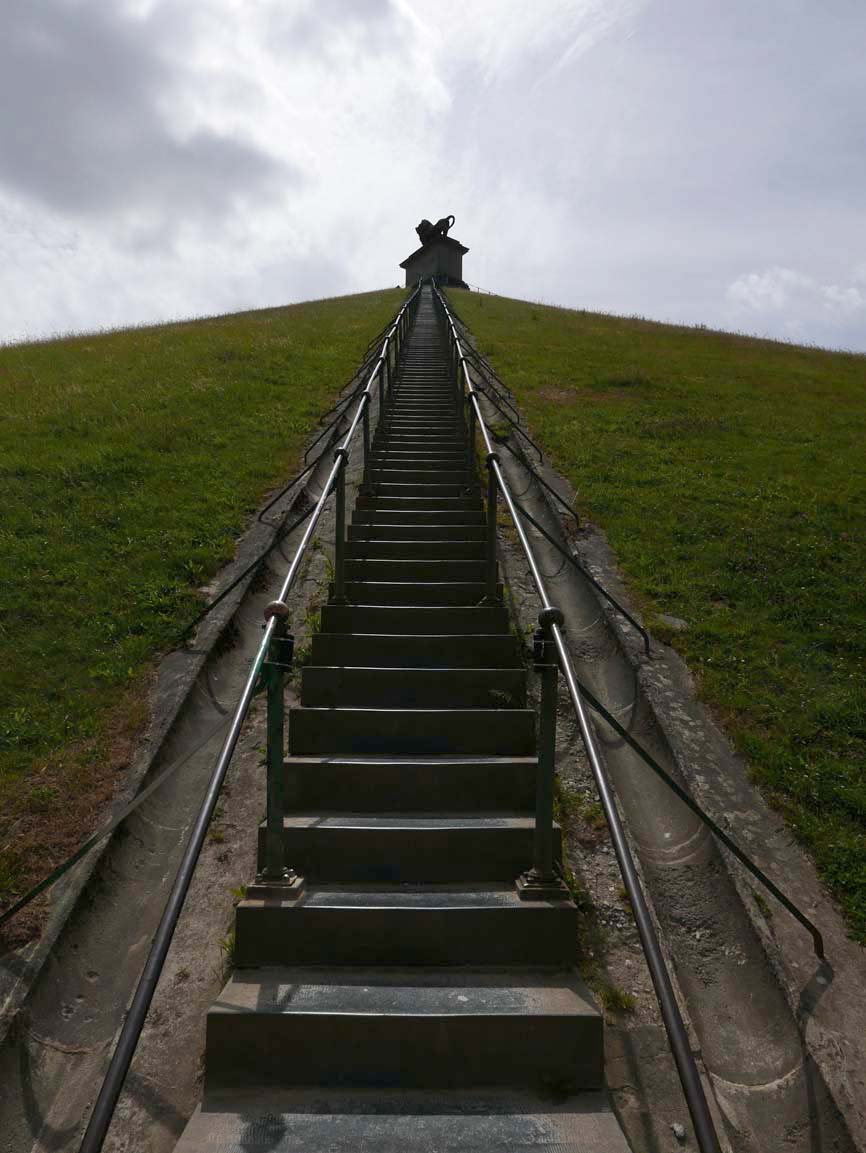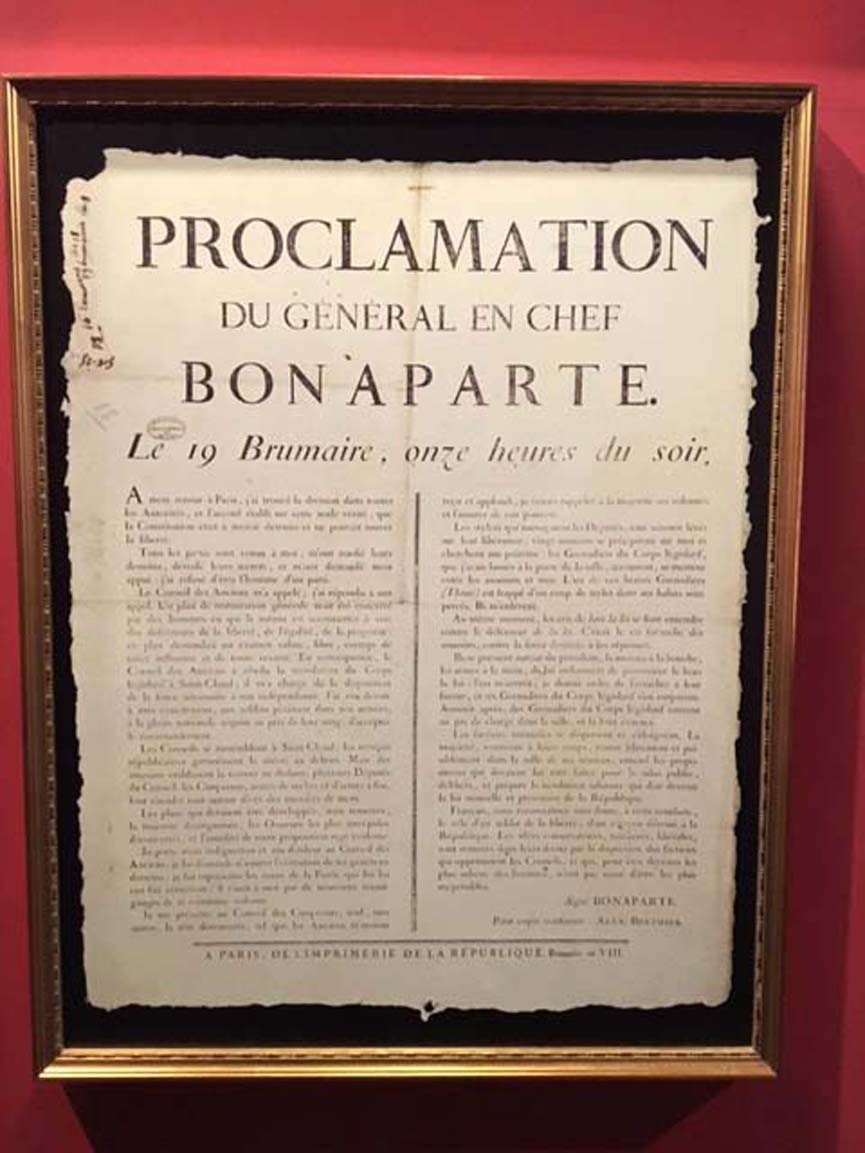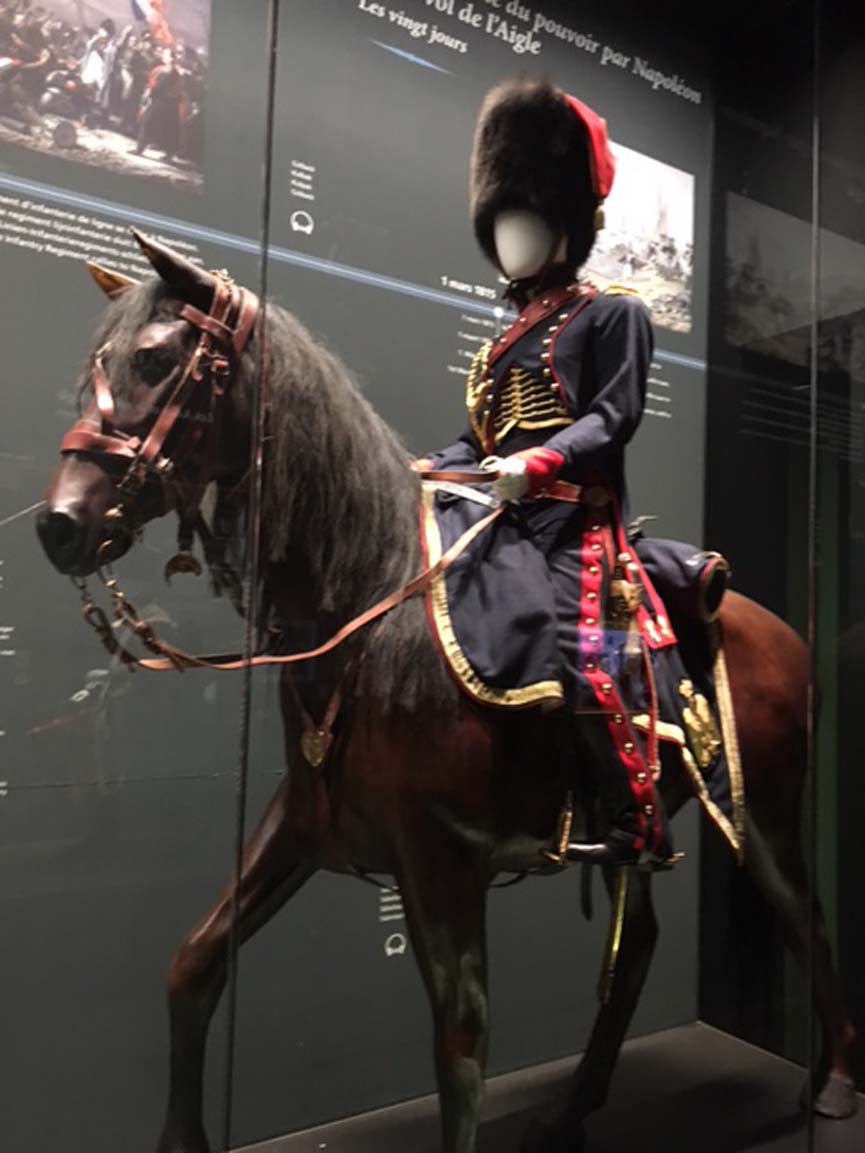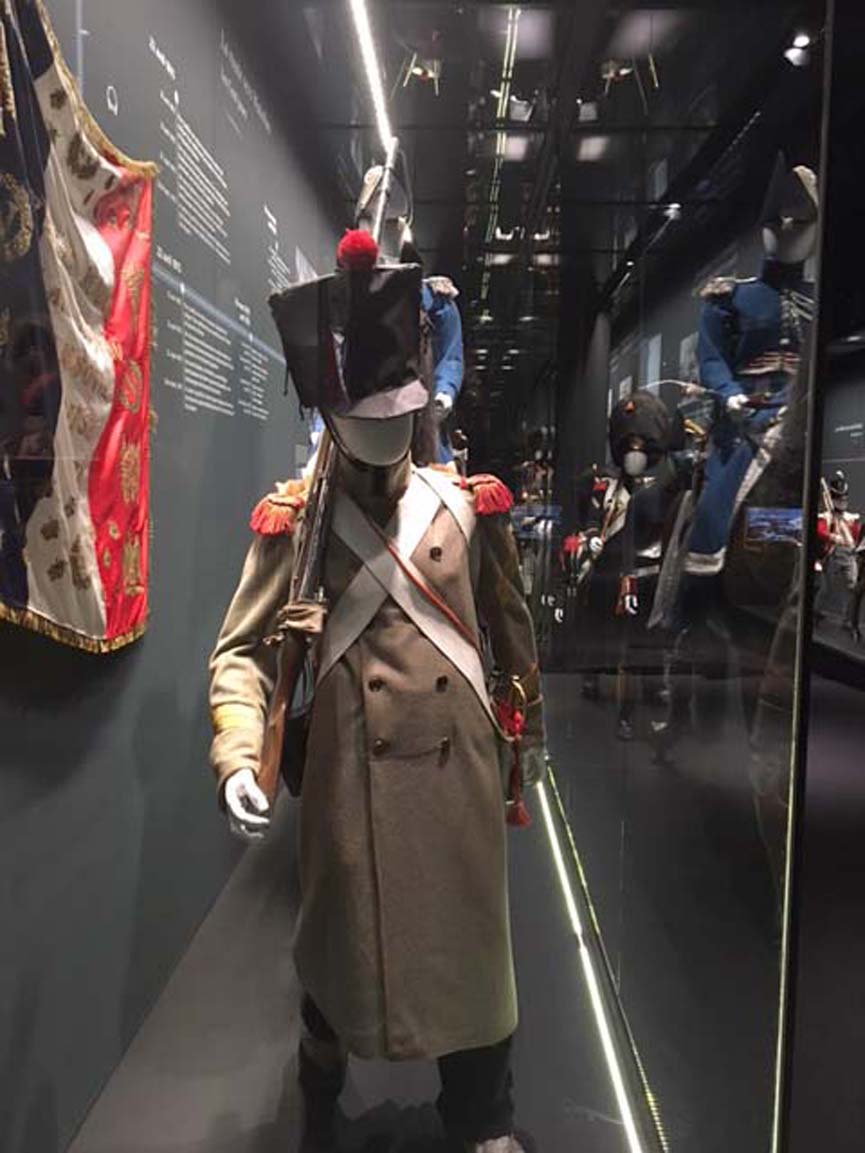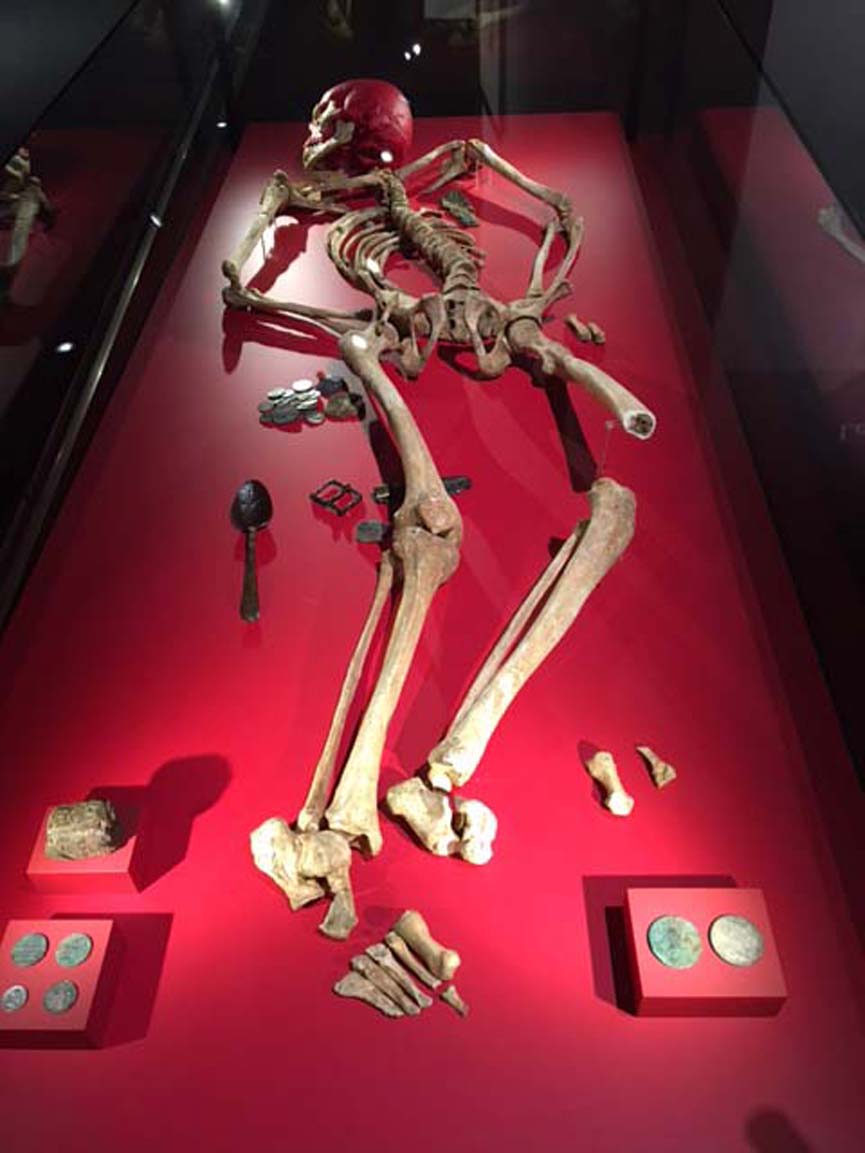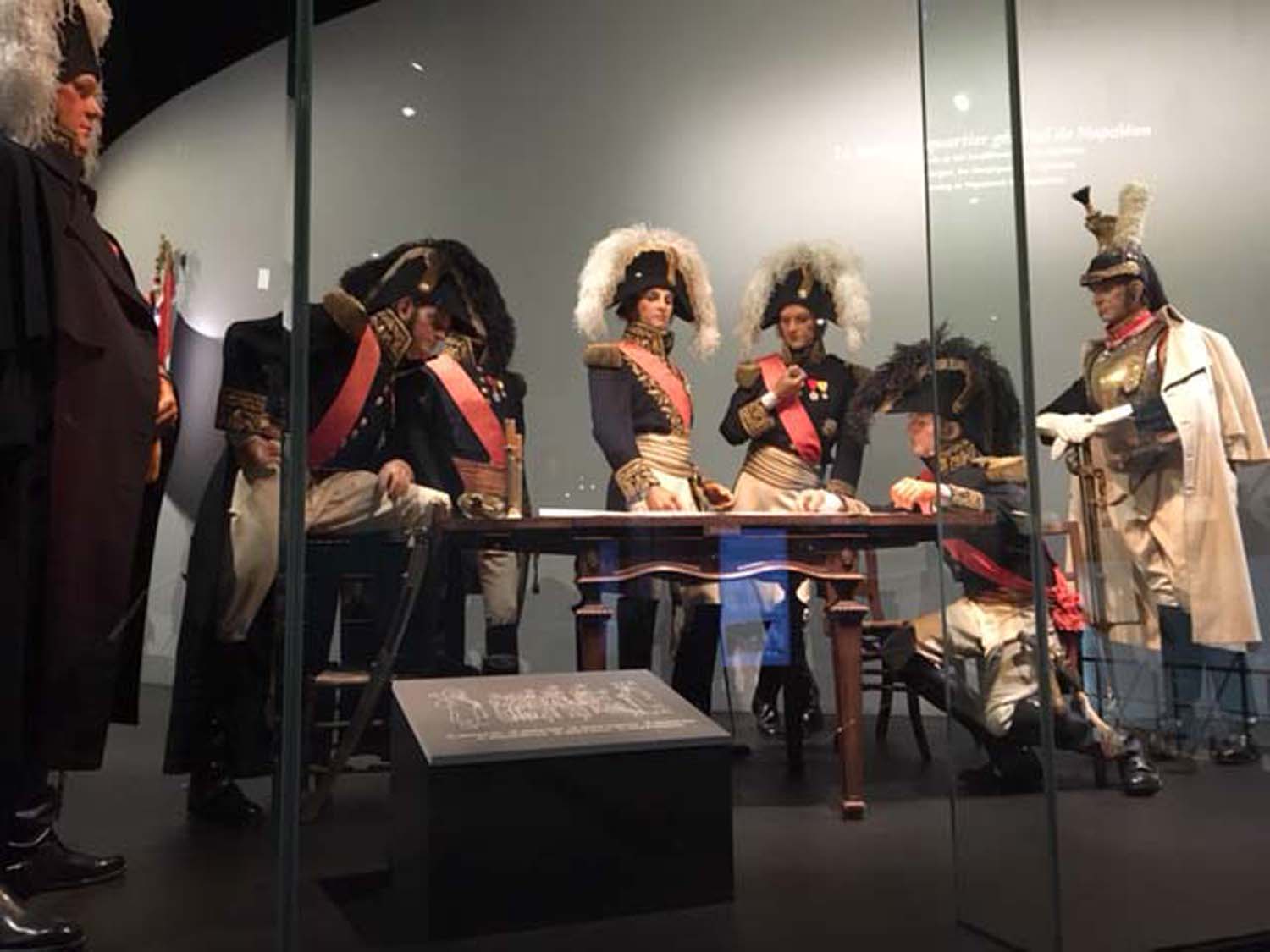I paid a quick visit to the Cathedral of St. Michael and St. Gudula in the morning. According to Wikipedia, Henry II, Duke of Brabant instructed the building of a Gothic collegiate church in 1226. The choir was constructed between 1226 and 1276. It took about 300 years to complete the entire church. It was completed just before the reign of the emperor Charles V commenced in 1519.
After the visit, I bought a sandwich and boarded a bus to Waterloo, which is a 45 minute ride outside of Brussels. I went to memorial site, which also includes a museum and monument, and views of the battlefields. The exhibition was very thorough, and even included a 3D IMAX recreation of the battle, which as cheesy as it was, also gave a really good window in to how such a battle would have been fought in 1815.
Visiting Waterloo also made a strong impression on Calvin and Octavia. Here's an excerpt from a letter that Calvin wrote to his wife:
"Here we took a carriage and went to the field of Waterloo 10 miles. Waterloo is more than 2 miles from the field of battle, but it was from here that the Duke of Wellington wrote and dated his dispatches— the town of Mount St. Jean, 2 miles further, lies between. We went to the edge of the hill beyond the town along which the British line was extended, to the opposite ridge three quarters of a mile beyond where the French force was displayed, went into the little beer house called la Belle Alliance, where Napoleon was during a considerable part of the battle, and drank a litre of bad Louvain ale in the room where the Walloon who kept the house said Boney had done the same, and where his picture hangs. (The front of the house has a flaring inscription importing that Wellington met there after the battle). We went also to the spot to which Napoleon led his life guards when he found the chances of the battle were desperate— and where he told them “onward— that is the road to Brussels— we will soon be there.” Poor fellow, he stood there till he saw his guards cut to pieces, and knew that all was lost, when he turned his head and fled with his routed army. This spot is not a ravine or a gully which some of the British say he got into— there is no such spot on the whole battle field— it is about midway between the position of the two armies, lower than either but higher than the ground between that and the British line. Here Sis [nickname for Octavia] stood some time— you must know she is a great Bonapartist and from this spot she gathered some flowers which I dare say she will bring home."
From the exhibition:

